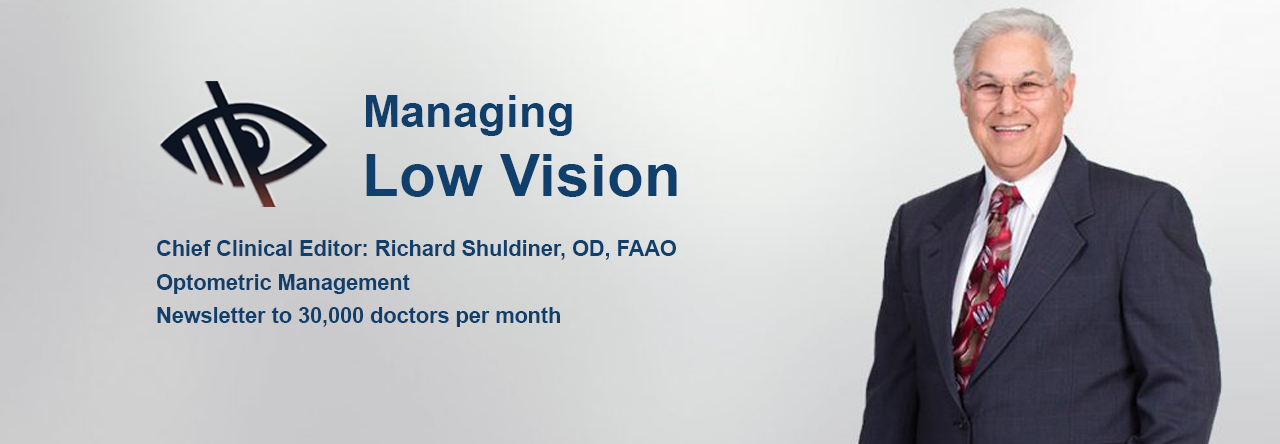June 2020
By Roderick Fields, OD with Richard J. Shuldiner, OD, FAAO, FIALVS Chief Clinical Editor
The longer I work with low vision patients the better I have become at managing their expectations. My prescribing hasn’t changed much over that time, but my ability to manage their expectations is much better nowadays.
Case in point, I worked with an 84 y/o lady yesterday whose “wish list” only included being able to read her mail again. She was 20/100, better eye, best corrected, so I do like I always do and afforded her two options for reading: holding the print very close or holding it further away.
With a +10.00 prismatic, reading at a 4″ distance, she could read the newspaper fluidly. With a 1.7X reading telescope, she could read the same newspaper fluidly at a 12″ reading distance. I presented her with the cost for each and she chose the prismatic option due to the cost difference, even though the quality of her near vision was slightly better through the reading telescope.
I reinforced with her the compromises she would have to make in order to read her mail, namely the 4″ reading distance and the fact that she would probably not enjoy reading for any long period of time at that close reading distance. I also pointed out that using the special reading light for that short of a reading distance could be somewhat challenging in order to get the light on the print without being too bright on her eyes.
 Reading Telescope Glasses Prismatic Glasses(+10.00)
Reading Telescope Glasses Prismatic Glasses(+10.00)
At the completion of the examination, I put the +10.00 prismatics on her and handed her a newspaper. She pulled the newspaper up to a 10″ distance and reported immediately that she could not read it. When I took my hand and pushed the newspaper in to a 4″ reading distance she said, “Oh, there it is!” and gave me a big smile, which further reinforced to me that she liked what she saw. I ended up spending a few more minutes with her practicing pulling the reading material up to that 4″ reading distance before I felt comfortable she could manage. I then handed her a large print brochure that detailed everything that we had covered all of the aspects of reading with prismatic low vision glasses.
Had she gone with the reading telescope, it too has inherent pros and cons that go with using it, like a smaller viewing field and a slightly increased weight and, of course, higher cost.
Seeing with any low vision device is not like seeing with our natural vision. To understand that it may be challenging for some increases our ultimate success rate. We must take the extra time to make sure the patient understands the potential limitations. We must do what we can to help the patient adjust to the compromises they may have to make in order to function better. It is similar to wearing a new hearing aid or trying to adjust to a new set of false teeth.
Low vision might be about seeing, but it is really about “doing”. When I speak with patients before their visit, they never describe their low vision in terms of 20/100 or 20/200, but they do tell me what they would like to be able to “do” again, like read, watch TV, see faces and even drive.
As low vision doctors, we have, of course, many more ways to help patients with low vision than just prismatic glasses and reading telescopes. Telescopic glasses can be custom designed for many types of tasks. Microscope glasses are available in much higher powers. In addition, we have electronic desktop, handheld and head borne devices that work well with patients who are considered to be profoundly visually disabled. These have opened up a whole new world for both the low vision patient and the low vision doctor.
Success is very much mitigated by expectations. If you take the time to truly communicate what can and cannot be achieved, as well as the advantages and disadvantages of each low vision device, success is more reachable.
I really love doing this!

